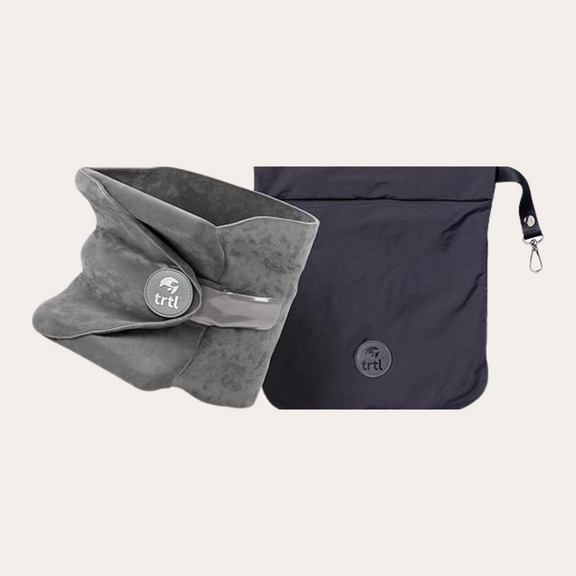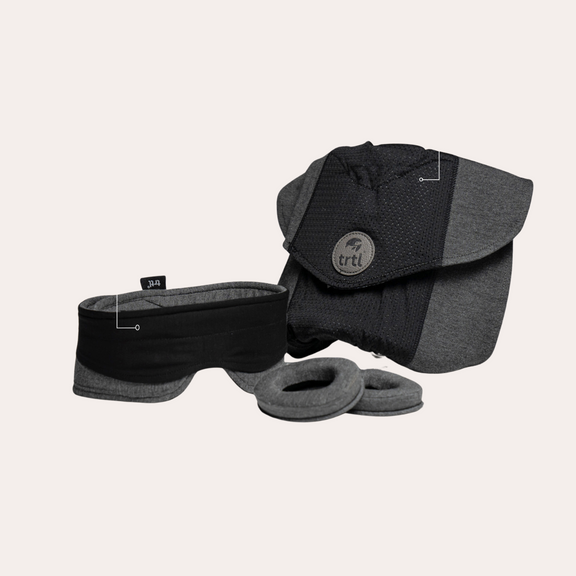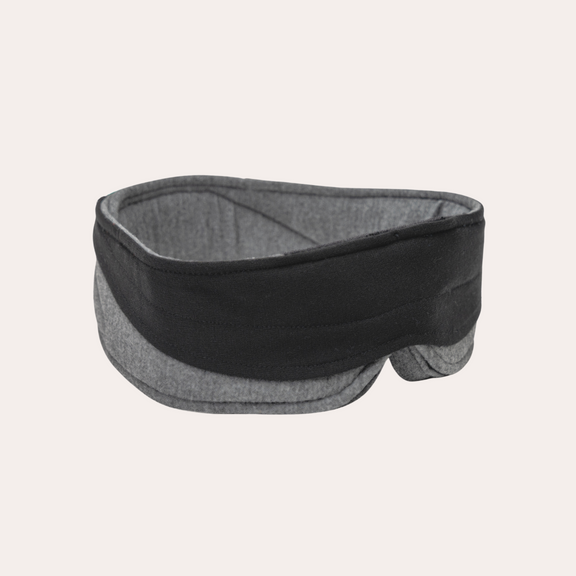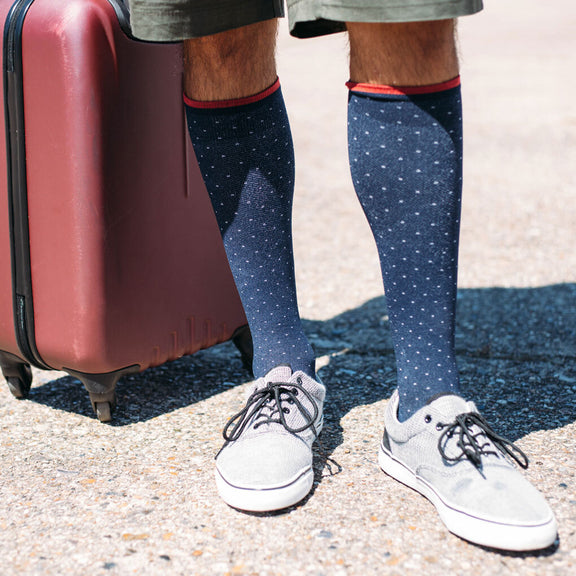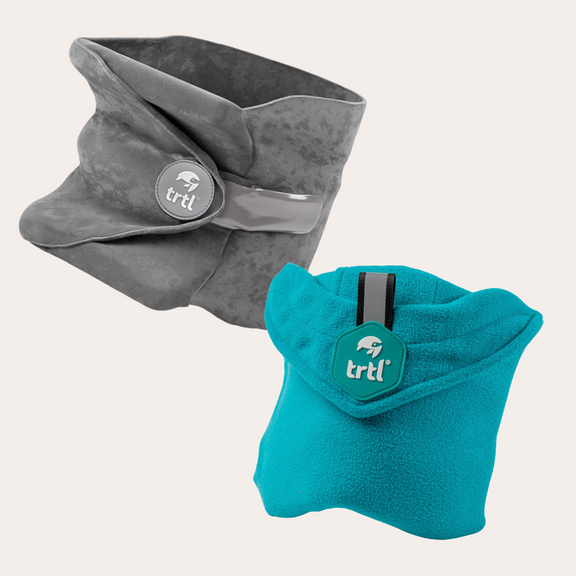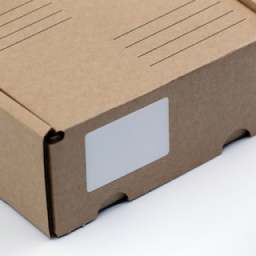Sep 15, 2023
The Ultimate Guide to Surviving Long-Haul Flights: Tips for Comfort
By
Karin Svensson
Thanks to transoceanic travel, we can see more of the world than ever before. Whether it’s Dubai to Singapore, Perth to London Heathrow, or anywhere in between, jetting around the globe has never been easier.
However, that also means that people can spend nearly an entire day (or more!) off the ground, cruising in altitude limbo, just waiting to land.
But long-haul flights can have a serious effect on our bodies. With this Trtl Travel guide, we’ll help walk you through exactly what a long-haul flight is and how to make the process as comfortable as possible.
What is a long-haul flight?
A long-haul flight refers to a type of air travel characterised by its lengthy duration, often lasting several hours or even exceeding a full day in some cases!
Usually operated by large aircrafts, long-haul flights carry a lot more passengers than a flight leaving from the UK to Europe, for example. On average, a transoceanic flight can carry anywhere from 240-450 passengers, while a Boeing 737-800 — which travels on short routes — can carry up to 189 people.
How long is a long-haul flight?
The exact duration of a long-haul flight can vary significantly depending on specific routes and destinations; however, as a general guideline, a long-haul flight is anything that lasts between 6-12 hours.
What is an ultra-long-haul flight?
An ultra-long-haul flight is any trip that goes beyond the typical duration of a long-haul flight. These are usually long distances that fly nonstop for over 12 hours.
These days, long-haul flights have become more feasible with the introduction of models like the Boeing 787 Dreamliner, Airbus A350 and the new Boeing 777X, the world's largest and most efficient twin-engine jet, set to launch in 2025.
What are some ultra-long-haul flight routes?
Some examples of ultra-long-haul flights include:
- Singapore Airlines — Nonstop flight from Singapore to Newark, New York. The flight covers a distance of 9,500 miles and takes around 18-19 hours.
- United Airlines — Nonstop flight from Los Angeles to Singapore. This flight covers a distance of 8,700 miles and takes between 17-18 hours.
- Emirates — Nonstop from Dubai to Auckland, Australia. The flight covers a distance of 8,800 miles and takes around 17-18 hours.
What can happen to your body on a long-haul flight?
When you’re on a long-haul flight, there are a lot of effects that this can have on your body, especially when you’re sitting in a cabin for an extended period of time. Here are some of the most common issues that passengers face when they’re on a long-haul flight:
- Dehydration — The low humidity levels in the cabin can lead to dehydration. It's important to drink plenty of water during the flight to stay properly hydrated!
- Poor circulation and blood clots — Prolonged sitting can lead to poor circulation and increase the risk of developing blood clots, known as deep vein thrombosis (DVT). To reduce this risk, perform in-seat exercises, stand up and move around the cabin when you can, and consider wearing compression socks to help increase blood flow.
- Neck and shoulder strain — When you’re in an uncomfortable seating position, this can cause neck and shoulder pain, especially if you’re trying to get some shut-eye in an awkward position. Bringing a Trtl Travel Pillow can help relieve stress on your spine and muscles.
- Ear, nose, throat and dental discomfort — Changes in cabin pressure during take-off and landing can lead to ear discomfort or even ear pain. Chewing gum, swallowing, or yawning can help equalise pressure. Dry cabin air can also irritate the nose and throat, potentially leading to dryness or discomfort. Tooth pain can also arise due to the changes in pressure.
What should you wear on a long-haul flight?
Choosing the right clothing for a long-haul flight can significantly impact your comfort and well-being whilst you’re in the sky. If you’re looking for some tips on what to wear, we’ve got you covered.
- Comfortable layers — Opt for loose-fitting, comfortable clothing in breathable materials like cotton or moisture-wicking fabrics. Layers are important as cabin temperatures can vary, but just make sure that you’re suitably dressed for your leaving and landing destinations — remember, you can add or remove layers based on your comfort levels.
- Warm outer layer — Bring a lightweight jumper, cardigan or jacket that you can easily throw on if you feel cold in the cabin.
- Comfortable trousers or leggings — Choose trousers or leggings with some stretch for comfortable movement. Make sure you avoid tight jeans or trousers with restrictive waistbands that can dig into you while you’re travelling and cause discomfort.
- Adequate footwear — Wear shoes that are easy to slip on and off, as you might need to take them off when moving through security or on the plane. Avoid shoes that are too tight or constricting — opt for low-heeled shoes that provide good arch support and steer clear of heels!
- Eye masks and earplugs — Eyemasks and earplugs (or noise-cancelling headphones) can be your best friend when flying. If you’re sensitive to noise or light, these pieces can be invaluable in getting some restful sleep.
How to survive a long-haul flight
Plan ahead
1. Choose the right seat
Selecting the right seat can drastically enhance your flight experience. Aisle seats, for example, offer the freedom to stand without moving across other passengers. In contrast, a window seat provides a scenic view — which can help nervous flyers feel more comfortable — and offers a wall to lean against if you want to sleep.
Exit rows are often coveted for the extra legroom they provide, which can make it easier for taller passengers or those with disabilities to have a more enjoyable experience. However, seats close to bathrooms are often less desirable due to their frequent footfall traffic, smell and noise.
2. Book smart flight times
Aligning your flight time with your natural sleeping pattern can be a game changer. An overnight flight may allow you to keep up with your regular routine.
If you’re considering flights with layovers, sometimes a longer one can be beneficial. It offers the opportunity to stretch, refresh and even explore a new airport and surrounding areas.
3. Pack thoughtfully
Packing isn’t just about the clothes and toiletries! When you’re preparing for a long-haul flight, it’s essential to include all necessary documents — like your passport, visa, tickets and insurance.
It’s also a good idea to pack a small pouch or bag with some essentials like earplugs, an eye mask, a toothbrush and lip balm. While in-flight meals are also provided, having your favourite snacks can be a good idea, especially if you find aeroplane food less than appetising!
Stay comfortable
1. Hydrate
Staying hydrated while you’re flying is so important. The cabins in planes are known for their dryness, which can lead to dehydration.
To counteract these symptoms, you should aim to drink water consistently throughout the flight, but make sure that you limit your intake of alcohol and caffeine, which can exacerbate dehydration and negatively affect your sleep.
2. Move and stretch
If you’re sitting for a long period of time, this can lead to discomfort and DVT. To help combat these effects, try walking up and down the aisles every couple of hours to get the circulation moving in your legs.
When you’ve been sitting for a while, periodic stretches can also help keep stiffness at bay and help promote better blood flow.
3. Use travel accessories
Travel accessories can significantly improve your comfort levels while you’re on a plane. A supportive neck pillow like the Trtl Pillow Plus keeps your head and neck in an ergonomic position engineered for breathability with expert design.
4. Adjust your seat
Modern long-haul flights typically have adjustable headrests and footrests, so you’re able to have your comfort at the right level.
If you’re settling in for a nap or sleep, remember to buckle your seatbelt over any blankets or throws. This signals to the cabin crew that you’re securely fastened in, even if they’re doing routine checks.
Combat boredom
1. Entertainment
Lots of airlines invest in in-flight entertainment systems that offer an array of movies, TV shows, music, games and more! While this is great, it can also be a good idea to bring your own content onboard with you.
Prior to your flight, make sure that you download your favourite shows, a new movie, podcast or ebook ready for when you’re in the sky. Having entertainment that you know you’ll like can help beat the in-air blues.
2. Learn something new
Since you have a lot of free time when you’re up in the sky, long-haul flights provide a unique opportunity for some focused personal time.
Why not consider delving into a new hobby, like knitting, drawing, or even learning a new language? The opportunities are endless!
Are long-haul flights safe?
Yes, long-haul flights are extremely safe. Since these are operated by worldwide commercial airlines, they undergo extensive security and safety checks to the highest standards.
Cabin crew and pilots are expertly trained to carry out long-haul services and are put on shift patterns that ensure they’re alert during any overnight hours they work.
Get holiday-ready with Trtl Travel
No matter where you’re jetting off to, you want to do it in comfort. At Trtl Travel, our travel pillows will leave you feeling refreshed at your destination, whether it’s a quick trip of a few hours or a long-haul flight.
To find out more helpful tips and tricks for all things flying, check out our blog page.


